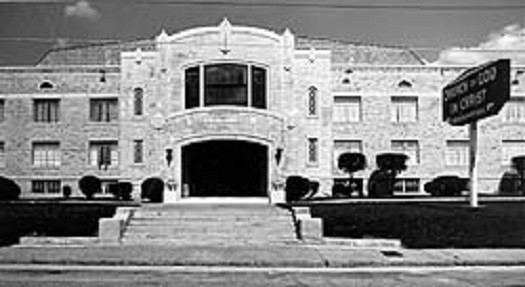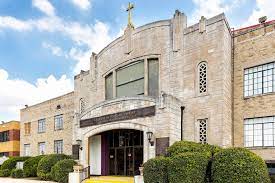Mason Temple: An Example of Civil Rights, Faith, and Resilience
Mason Temple is a soaring monument to faith and history located in the center of Memphis, Tennessee. Many people have a particular place in their hearts for this magnificent building because of its remarkable Art Deco design and rich history. It represents resiliency, community, and the continuous fight for civil rights.
- A brief of History:
One of the biggest African American Pentecostal organizations in the US, the Church of God in Christ (COGIC), is where Mason Temple got its start. Charles Harrison Mason founded COGIC in 1897, and the organization soon became well-known for emphasizing holiness, sanctification, and the baptism of the Holy Spirit.
A central headquarters was clearly needed as COGIC gained notoriety and influence. Plans to build a stately temple that would be the denomination's main site were initiated in 1940. Mason Temple, named for COGIC's founder, was completed four years later in 1944.

- Architectural Marvel:
The architectural value of Mason Temple is derived from both its magnificent design and historical significance. The Art Deco design of the temple, with its clean, geometric lines, and ornate decorations, captures the fashion of the day. It is a notable landmark in Memphis because of its symmetrical façade, tall spires, and intricate embellishments.
Mason Temple welcomes guests with a large interior that is decorated with tasteful furniture and exquisite woodwork. The main sanctuary has a calm ambiance that is ideal for worship and contemplation because of its lofty ceilings and stained glass windows, which give off an air of solemnity and reverence.

- A Platform for Change:
Mason Temple is well known for its stunning architecture, but its real significance comes from its crucial part in the civil rights fight. Dr. Martin Luther King Jr. gave his well-known "I've Been to the Mountaintop" speech from the Mason Temple pulpit on April 3, 1968, the night before he was assassinated.
Dr. King urged his audience to stick to their commitment to nonviolent protest as he talked passionately about the ongoing fight for social justice and civil rights in his moving speech. Speaking in front of the soaring spires of Mason Temple, his remarks had a profound impact on everyone in attendance and reverberated across the country.
- A Legacy of Hope:
Following Dr. King's address, Mason Temple remained a source of inspiration and hope for the people of Memphis and beyond. It continued to be a hub for religious services, neighborhood get-togethers, and cultural activities, encouraging harmony and camaraderie among its multicultural membership.
Mason Temple was honored to receive the 1993 National Historic Landmark designation in honor of its historical and cultural value. It still serves as a symbol of the ongoing influence of social activism, spirituality, and resiliency that has molded the African American experience in the US.
As we consider Mason Temple's illustrious past, may we be inspired by its example and work to create a world governed by the values of equity, justice, and love for all. Speaking from the Mason Temple pulpit that fatal night, Dr. King said, "We've got some difficult days ahead, but it really doesn't matter with me now, because I've been to the mountaintop."